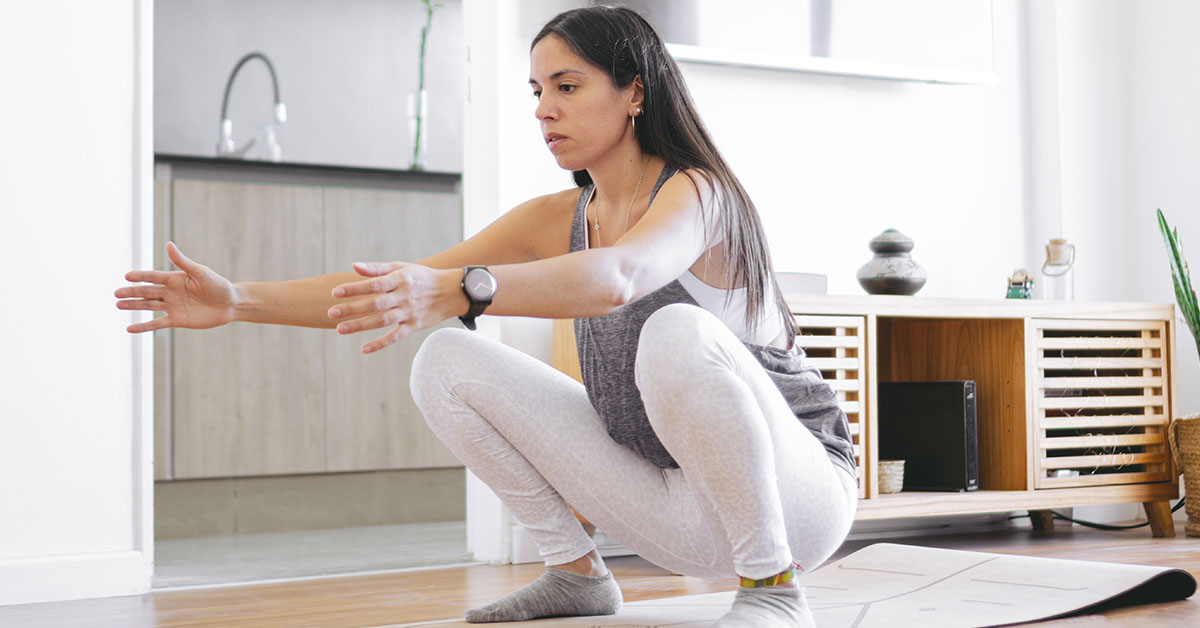Squats are one of the most popular exercises out there, and for good reason. They are a compound movement that can work multiple muscle groups at once, making them an efficient exercise for building strength and muscle. But have you ever tried going as low as you can when squatting? This is called a deep squat, and recent research has found that it can do wonders for your health.
The Health Benefits of Deep Squats
For years the message was that deep squatting was dangerous for our joints. They said that your toes going past your knees was dangerous and you were likely to get injured. Now, however, we know that squatting all the way to the bottom is actually the best way to squat. (1)
Increased Mobility and Flexibility
One of the biggest benefits of deep squats is increased mobility and flexibility. When you go as low as you can in a squat, you are stretching your hip, knee, and ankle joints. This can help improve your range of motion in these joints, making performing other exercises and daily activities easier. The more mobility you have, the more longevity and mobility you will have into old age. (2)
Improved Posture
Deep squats can also help improve your posture. When you perform a deep squat, you engage your core muscles, which can help strengthen your back and improve your posture over time. This, of course, is dependent on you performing the squat correctly.
Increased Strength and Muscle Mass
Deep squats are a great way to build strength and muscle mass in your lower body. When you go as low as you can in a squat, you activate more muscle fibers in your legs, glutes, and hips, which can lead to greater gains in strength and muscle mass. This exercise is also a big calorie burner because you activate some of your body’s biggest muscles. (3)
Improved Balance and Stability
Deep squats can also help improve your balance and stability. When you perform a deep squat, you engage your core, which can help improve your balance and stability. This can be especially beneficial for older adults who are at risk of falls.
Better Athletic Performance
Deep squats can also improve your athletic performance. When you go as low as you can in a squat, you activate more muscle fibers in your legs, which can help improve your speed, power, and agility. Training deep squats means you will have more power and strength through your full range of motion.
Reduced Risk of Injury
Contrary to popular belief, recent research has found no correlation between deep squats and the incidence of tissue injury to bone, ligament, or cartilage. In fact, some researchers believe that compressive forces in the knee may be higher in a partial squat than in a deep squat, making deep squats a safer exercise for your joints.
Muscles Worked in a Deep Squat
As already mentioned, squatting works some of the biggest muscles in your body. Deep squats work multiple muscle groups in your lower body, including:
- Quadriceps
- Hamstrings
- Glutes
- Calves
- Hip flexors
- Adductors
- Abductors
Beyond just leg muscles, deep squats also work your “trunk” muscles. This refers to your core: Abdominal muscles for sure, as well as your back muscles. You will need to recruit these muscles to keep you stable and in the proper posture throughout the movement.
How to Perform a Deep Squat
Performing a deep squat is similar to performing a regular squat but with a greater emphasis on going as low as you can. Here’s how to do it:
- Stand with your feet shoulder-width apart, toes pointing slightly outwards.
- Engage your core and keep your chest up.
- Begin to lower your body by bending your knees and pushing your hips back.
- Keep lowering your body until your hips are below your knees or as low as you can comfortably go.
- Pause for a moment at the bottom of the squat.
- Push through your heels and extend your hips to return to the starting position.
If you haven’t been deep squatting or your mobility is lacking, you will likely need to work up to the move. First of all, you will want to do a dynamic warm-up that focuses on hip and ankle mobility before you start. This will improve your ability to perform the exercise through the required range of motion.
If you find that your body isn’t able to get fully into the deep squat position, start off using split squats. This exercise will strengthen the muscles that need strengthening and improve mobility where you need it so that you can later perform a full squat.
When you do begin performing full squats, only use a weight that allows you to perform the full motion. If you are adding weight and find that it prevents you from going all the way to the bottom, remove some and continue working your way up to that weight.
Squat Low For Your Health
Deep squats are a highly beneficial exercise that can improve your mobility, flexibility, posture, strength, and athletic performance. They work multiple muscle groups in your lower body and are a safe exercise for your joints. So next time you hit the gym, try going as low as you can in your squats and reap the benefits for your health and fitness.
Keep Reading: Your Bones Are Getting Weaker Year After Year, but There Are Ways to Keep Them Healthy
Sources
- “The relationship between the deep squat movement and the hip, knee and ankle range of motion and muscle strength.” Pubmed. Yasuhiro Endo, et al. June 2020.
- “The health and performance benefits of the squat,deadlift, and bench press.” Med Crave Online. Luke Del Vecchio, et al. April 6, 2018.
- “Deeper Squats for deeper Butts.” Reps Issue 3 | BioLayne. August 2022

